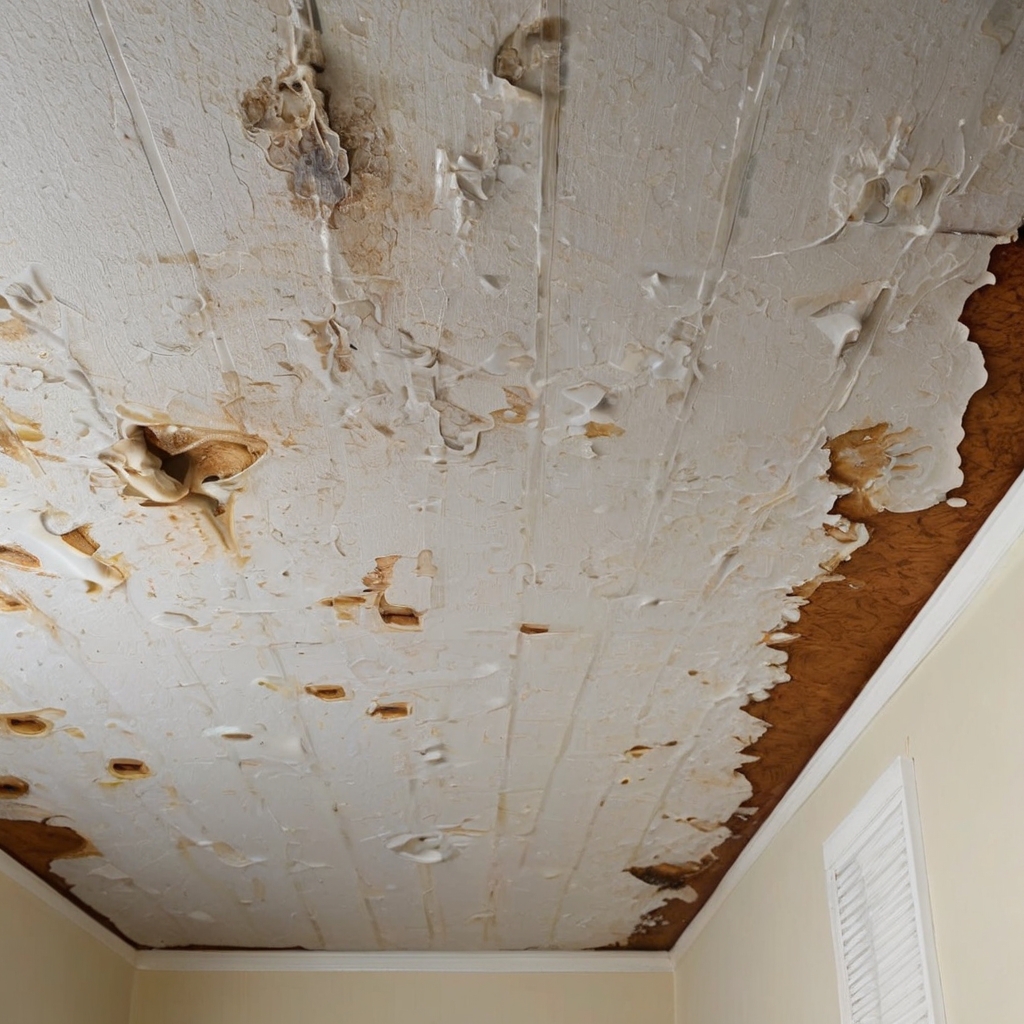Key Takeaways:
Identifying signs of ceiling leaks early can prevent extensive damage and costly repairs. Immediate action is crucial for maintaining the integrity and safety of your home. Regular inspections and proactive measures can also prevent long-term consequences.

Table of Contents:
- Introduction
- Visible Stains and Discoloration
- Bubbling or Peeling Paint
- Mold and Mildew Growth
- Sagging Ceilings
- Active Drips or Water Puddles
- Cracks and Structural Damage
- Unexplained Musty Odors
- Conclusion
Introduction
If not addressed promptly, ceiling leaks can quickly escalate from minor inconveniences to significant structural problems. Early identification of warning signs is crucial in preventing extensive damage to your property. In this guide, we will explore the most common indicators that require attention to your ceiling. Taking swift action when these signs appear will help you avoid expensive repairs and ensure the safety of your home environment. Understanding these signs empowers homeowners to act promptly and preserve the integrity of their living space.
Visible Stains and Discoloration
One of the most obvious signs that your ceiling requires immediate attention is the presence of stains and discoloration. Water intrusions often manifest as dark or yellowish spots on the ceiling surface. These stains not only indicate active leaks but also suggest potential damage to underlying materials. If you notice such markings, consider consulting a professional. Particularly in regions with high precipitation, like Seattle, ceiling leak repair in Seattle can address these issues efficiently. Ignoring these early signs can lead to more costly repairs, as the moisture will continue seeping into the structure.
Bubbling or Peeling Paint
Another tell-tale sign of water intrusion is bubbling or peeling paint on the ceiling. This occurs when moisture accumulates beneath the paint layer, disrupting its adhesion and causing visible deformations. Over time, the paint may peel away, exposing the damp surface beneath. This affects the aesthetic appeal of your living space and compromises the integrity of the ceiling materials. Addressing these signs promptly can prevent further damage and restore the look of your ceiling.
Mold and Mildew Growth
Mold and mildew are often unwelcome guests in any home, thriving in moist and damp environments. If you notice dark spots or fuzzy patches on your ceiling, mold and mildew could be the culprits. Beyond causing cosmetic damage, mold and mildew pose significant health risks, especially for individuals with allergies or respiratory issues. Damp ceilings provide the perfect breeding ground for these fungi, highlighting the importance of quick intervention. Professional mold remediation may be necessary to eliminate these hazards.
Sagging Ceilings
A sagging ceiling is a serious water damage indicator and demands immediate attention. This occurs when the weight of accumulated moisture overwhelms the ceiling’s structural support, causing it to bow or dip. Sagging ceilings not only compromise the aesthetic integrity of your home but also pose potential safety hazards. If left unaddressed, the ceiling could collapse, leading to a dangerous and costly situation. Professional assessment and repair are crucial to prevent further deterioration and ensure the safety of your living environment.
Active Drips or Water Puddles
The most obvious sign of a ceiling leak is the presence of active drips or water puddles. These indicate that water is continuously entering your home through compromised areas in the ceiling. Even small drips can lead to extensive damage over time, as prolonged exposure to moisture weakens the structural integrity of ceilings and walls. Catching and resolving these issues early on can help you avoid more significant problems in the future. It’s essential to identify the source of the leak and rectify it immediately to prevent the issue from escalating.
Cracks and Structural Damage
Whether hairline or extensive, cracks in the ceiling can signify underlying water damage. These can develop due to the expansion and contraction of materials affected by moisture, causing structural shifts. While some cracking may be due to natural settling, persistent or widening cracks often indicate a more severe problem. The structural integrity of your ceiling may be at risk, and addressing the root cause of the damage is imperative to prevent further complications. Consulting a professional can help determine the appropriate repair solution for these structural issues.
Unexplained Musty Odors
Unexplained musty odors are a subtle yet tell-tale sign of water damage within your home. These odors often indicate mold and mildew growth hidden within the ceiling or wall cavities. Even if you don’t see visible signs of water intrusion, a persistent musty smell should not be ignored. Mold spores can quickly proliferate and pose health risks to the occupants of your home. Conducting a thorough inspection can help identify the source of the odor, allowing you to address the issue before physical signs of damage become evident.
 Recognizing the signs of ceiling leaks is essential for maintaining the safety and integrity of your home. Taking prompt action at the first indication of damage can prevent costly repairs and ensure a healthy living environment. Regular maintenance and inspections are key to safeguarding your home from water-related issues. Addressing these signs early, whether it’s visible stains, bubbling paint, or musty odors, can save you time and resources in the long run. Prioritizing ceiling repair and maintenance protects your property and the well-being of those residing there.
Recognizing the signs of ceiling leaks is essential for maintaining the safety and integrity of your home. Taking prompt action at the first indication of damage can prevent costly repairs and ensure a healthy living environment. Regular maintenance and inspections are key to safeguarding your home from water-related issues. Addressing these signs early, whether it’s visible stains, bubbling paint, or musty odors, can save you time and resources in the long run. Prioritizing ceiling repair and maintenance protects your property and the well-being of those residing there.